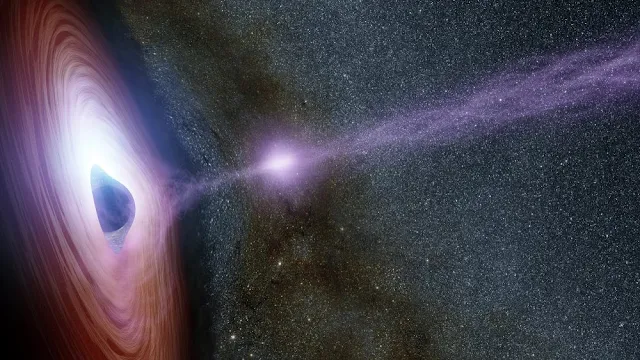Astronomers have tracked the path of a hypervelocity star through time, determining that it was ejected from the massive black hole at the heart of our galaxy at a period when civilization as we know it did not exist.
This cosmic body, known as S5-HVS1, is an "A-type main-sequence star" and is thought to be the fastest yet found by scientists. The cosmic body is speeding at over 1,755 km/s, or roughly four million miles per hour, according to measurements of its course.
According to astronomers' estimations, this occurred roughly 5 million years ago. The spectacular ejection confirmed the existence of the so-called Hills mechanism. When a supermassive black hole breaks a binary star, the Hill process occurs.
Sagittarius A*, a supermassive black hole roughly 4 million times the mass of the Sun, is found in our Milky Way Galaxy. The Hills process outlines how stars are separated and then allowed to continue their own journeys. Astronomers saw a star being dragged into orbit around a black hole as its companion star was ejected into intergalactic space at incredible speeds.
Astronomers analyzed kinematics and tracked the orbit backward in time to figure out where S5-HVS1 came from. They determined that the star could be traced back to the Milky Way's Galactic Center, where it was ejected at a speed of 1800 km/s between 5 and 4.8 million years ago, making S5-HVS the first clear proof of the Hill Mechanism and one of the galaxy's fastest stars. The star was seen approaching Earth from a distance of around 29,000 light-years distant, moving more than 10 times faster than any other star in the Milky Way Galaxy.
 |
| The location of S5-HVS1 on the sky and the direction of its motion. Image credit: Sergey Koposov. |
Because of its speed, scientists believe it will one day leave the Milky Way galaxy and never return.
The revelation was not only significant, but it was also unexpected. For years, astronomers have speculated that Black Holes may spew stars at inconceivable speeds. Nonetheless, they have never linked a fast-moving star to the galaxy's black hole.
Astronomers are very interested in seeing and tracking the journey of S5-HVS1 since it must have originated near the galactic core. Furthermore, it is one-of-a-kind; the environment in the heart of the Milky Way is completely foreign to our local galactic environment. As a result, S5-HVS1 is a "visitor from a strange land."
Reference(s): Oxford Academic (Research Paper)

Comments
Post a Comment
Share your thoughts